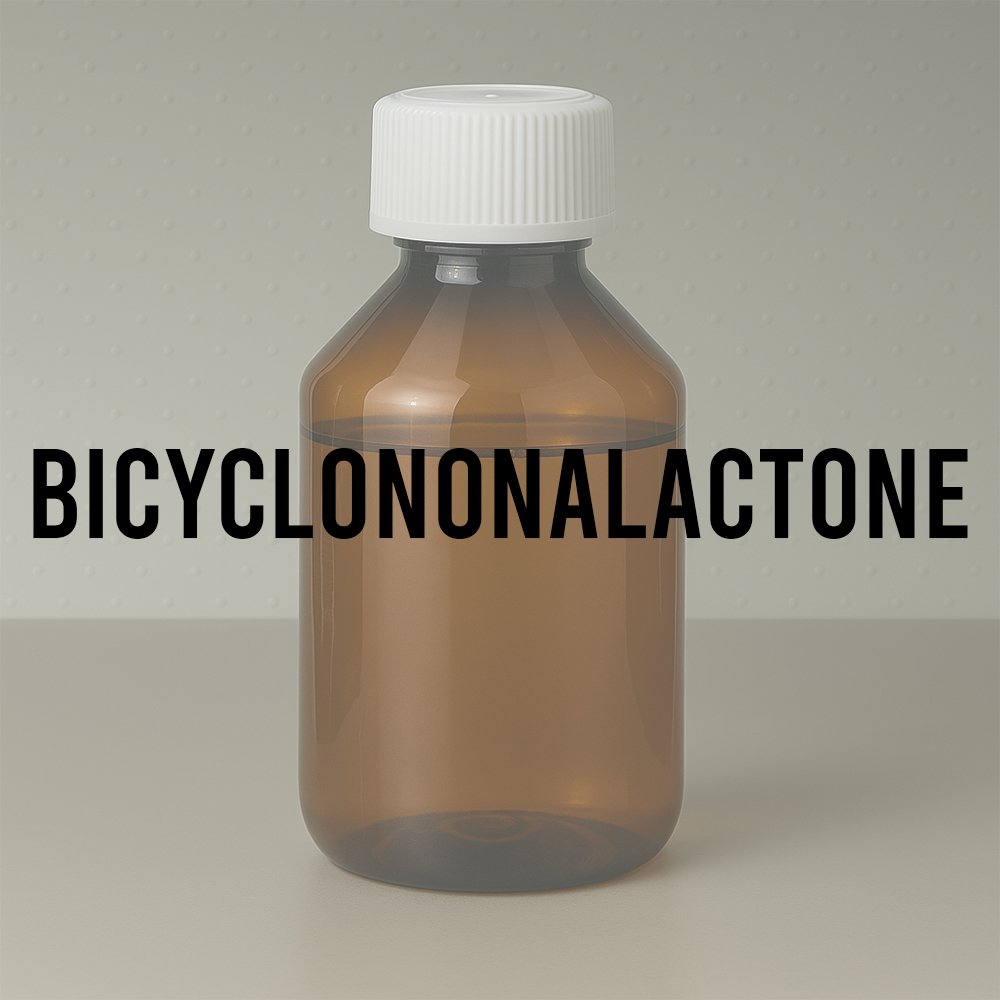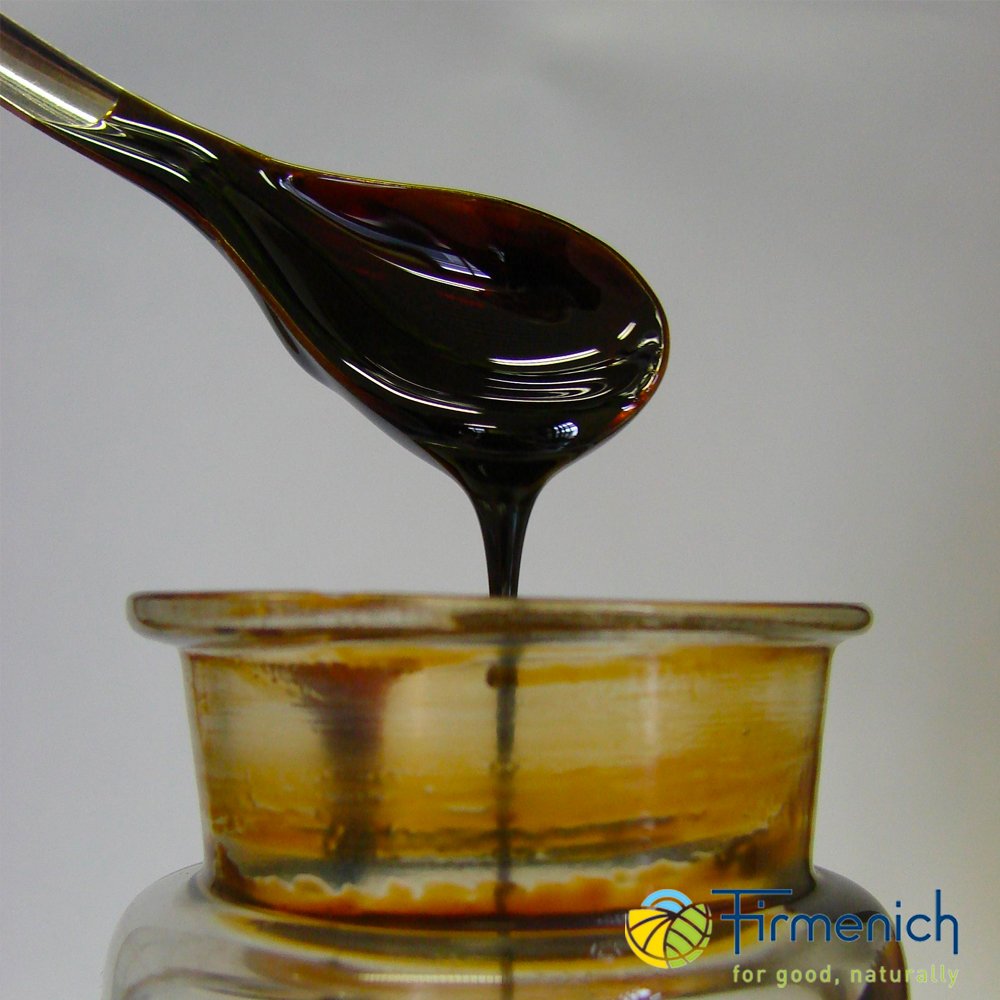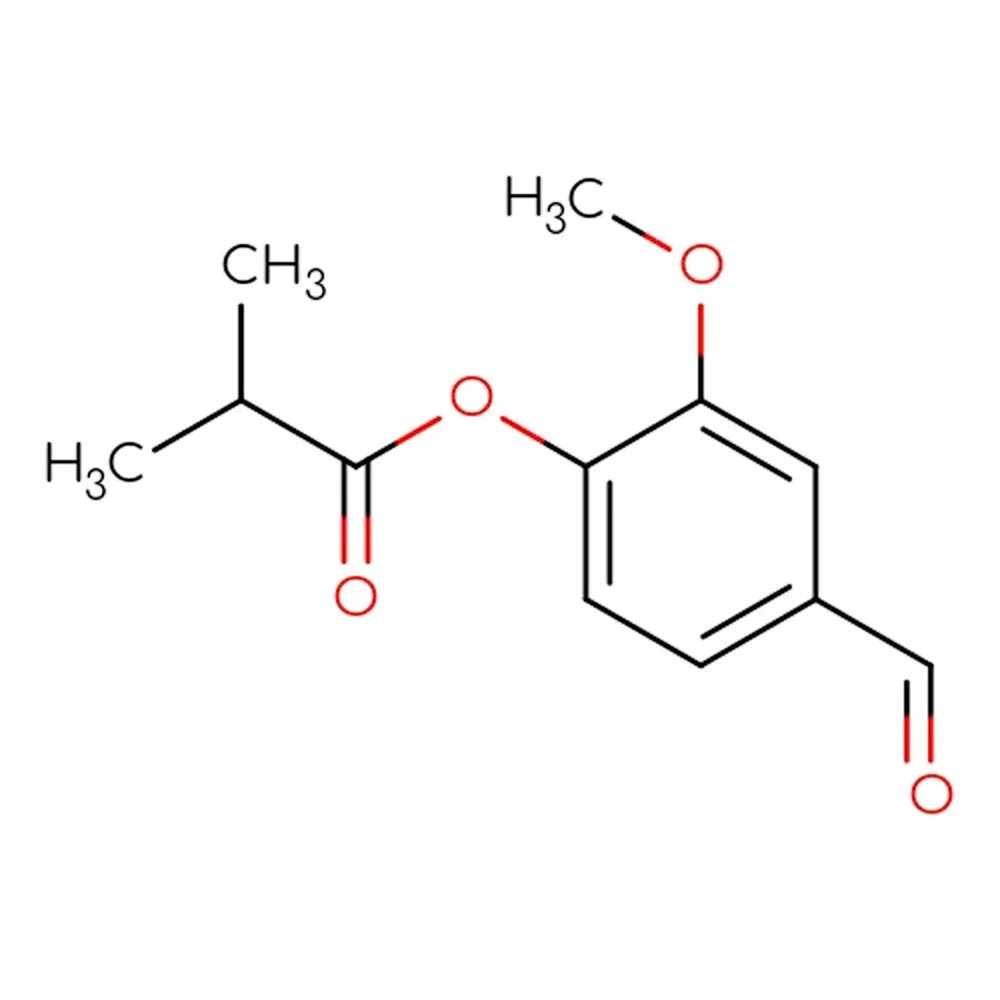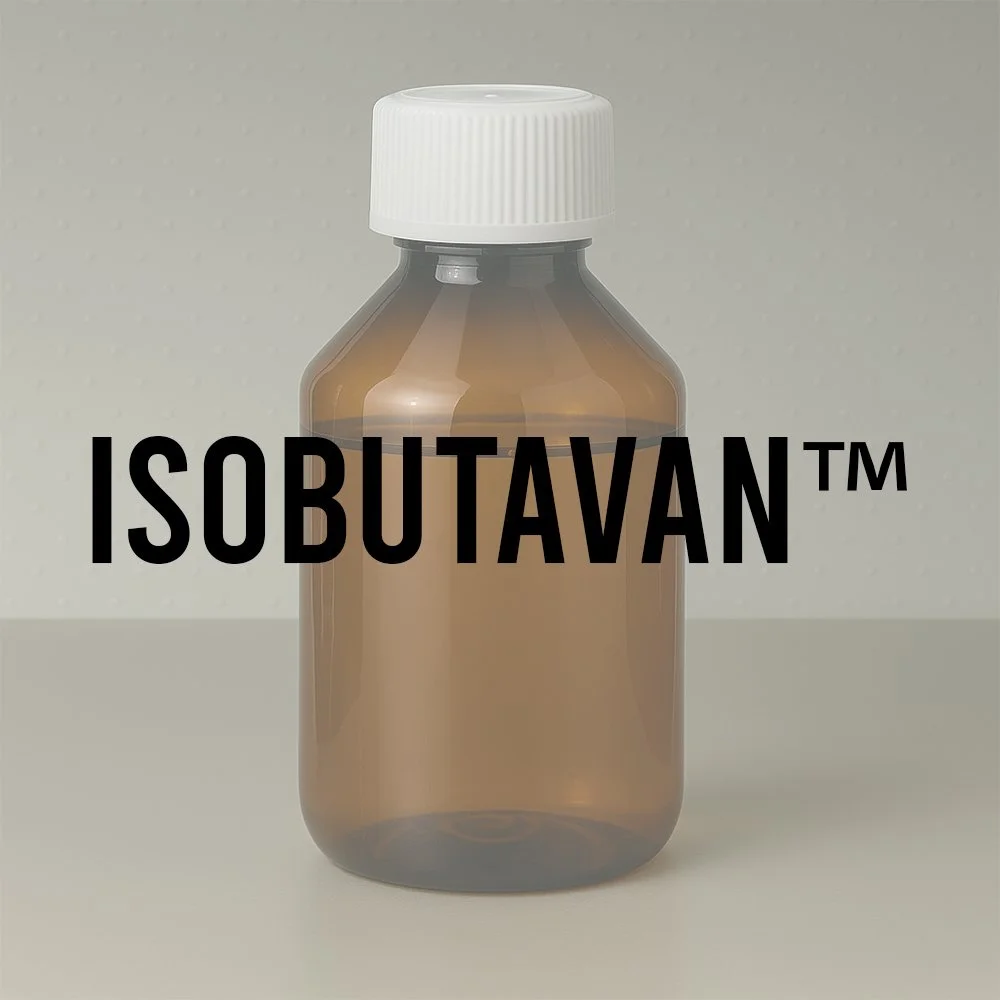Vanilla (Bourbon) Tincture 20% Technical Ingredient Overview
🏭 Manufacturer — Scentspiracy Innovation Lab
🔎 Chemical Name — Not applicable (complex natural mixture)
🧪 Synonyms — Vanilla tincture, Tinctura Vanillae, Alcoholic extract of Vanilla planifolia, Bourbon Vanilla tincture
📂 CAS Number — 8024-06-4 (Vanilla extract)
📘 FEMA Number — 3107
⚖️ Molecular Weight — Not applicable (natural mixture)
📝 Odor Type — Balsamic, gourmand, sweet-woody
📈 Odor Strength — Medium to high (concentration-dependent; ethanol-driven initial lift)
👃🏼 Odor Profile — Sweet, warm, creamy vanilla with woody-resinous undertones, subtle phenolic and tobacco-like nuances, animal (castoreum-like) notes in high-quality Bourbon types
⚗️ Uses — Fine fragrance composition (oriental, amber, and gourmand bases), natural perfumery, botanical colognes, FEMA GRAS-approved flavoring applications
🧴 Appearance — Amber-brown to dark brown liquid, clear to slightly opalescent; may develop minor precipitate upon prolonged storage due to continued hydrolysis
What is Vanilla (Bourbon) Tincture?
Vanilla (Bourbon) Tincture is a botanical extract obtained through maceration of cured pods (capsules) from Vanilla planifolia G. Jacks. (Orchidaceae) in food-grade ethanol. The designation "Bourbon" refers not to the American whiskey, but to Île Bourbon (now Réunion Island), where the distinctive curing method was developed during French colonial cultivation efforts (Arctander, 1960). This tincture is typically prepared at a ratio of 10–20% vanilla solids by weight in 90–95% ethanol, though formulations vary by manufacturer and intended application.
Unlike synthetic vanillin—which represents only one isolated aromatic compound—Bourbon vanilla tincture contains a broad spectrum of volatile and non-volatile constituents. These include vanillin (the primary odorant), vanillic acid, p-hydroxybenzaldehyde, guaiacol derivatives, and trace resinoids that contribute depth, richness, and longevity to the extract's profile (Arctander, 1960). The aromatic complexity results from enzymatic transformations during the curing process, which can last three months or more, analogous to the curing of tobacco and tea.
The tincture retains the warm, balsamic sweetness characteristic of natural vanilla while offering superior miscibility with perfume compositions compared to absolutes or oleoresins. It serves as a foundational material in balsamic and gourmand olfactory families and remains valued in natural perfumery where synthetic materials are restricted or discouraged.
Historical Background
The use of vanilla (Vanilla spp.) traces back to pre-Columbian Mesoamerican civilizations. The Aztecs incorporated vanilla, specifically Vanilla pompona, into ceremonial beverages such as xocolatl (chocolate drink), where it served both as a flavoring agent and an aromatic enhancer (Krieger, 1992). The Spanish conquistadors, including Hernán Cortés, introduced vanilla to Europe shortly after their arrival in the Americas in the early 16th century (Arctander, 1960).
However, vanilla cultivation outside its native range faced a critical obstacle: Vanilla planifolia flowers require pollination by specialized insects (primarily Melipona bees native to Central America) or hummingbirds, which were absent in European colonies. For over 300 years, attempts to cultivate vanilla in tropical regions such as Madagascar, Réunion, and the Comoros failed to produce fruit (Arctander, 1960).
The breakthrough came in 1841 when Edmond Albius, an enslaved 12-year-old boy on Réunion Island, developed a practical hand-pollination technique. Using a small stick or toothpick, Albius demonstrated how to manually transfer pollen from the anther to the stigma of the orchid flower, a delicate process that remains the standard method today (Groom, 1992). This innovation enabled large-scale cultivation of vanilla outside Mexico and gave rise to the "Bourbon" designation for vanilla grown in the Indian Ocean islands.
Ethanol-based tincturing emerged in European apothecary and perfumery practice during the 19th century as a stable, reproducible extraction method. Unlike hydrodistillation—which fails to capture vanilla's non-volatile aromatic constituents—tincturing preserves the full olfactory spectrum of the cured pods (Arctander, 1960). By the late 1800s, vanilla tinctures were firmly established in both fine fragrance and flavoring applications.
Olfactory Profile
Scent Family
Balsamic, gourmand, sweet-woody (Oriental family)
Main Descriptors
Vanilla (Bourbon) tincture exhibits a rich, multifaceted aroma profile:
Top notes: Sweet vanilla, alcohol lift (ethanol-driven), slight floral-anisic nuance
Heart notes: Creamy vanilla, soft woody character, phenolic warmth
Base notes: Tobacco-leaf undertones, balsamic resinous depth, animal (castoreum-like) notes in high-quality Bourbon types, trace spicy-smoky facets
The olfactory profile of Bourbon vanilla differs notably from synthetic vanillin and from other vanilla species such as Vanilla tahitensis. Bourbon vanilla is characterized by deeper, more complex balsamic and woody tones, with subtle animalistic and tobacco-like facets that are absent in Tahitian vanilla (Arctander, 1960). These nuances arise from the unique curing process developed on Réunion Island and the specific terroir of Madagascar, Réunion, and the Comoros.
Intensity
Moderate to high. The perceived strength varies with dilution level and ethanol evaporation rate. In concentrated form, the tincture exhibits powerful sillage; upon evaporation of alcohol, the non-volatile resinous components persist with sustained intensity.
Tenacity
Excellent. Vanilla tincture demonstrates outstanding longevity on both skin and textiles. Arctander (1960) notes that "the tenacity of a true vanilla extract is quite outstanding, and the unusual uniformity of the fragrance all through the very slow evaporation make vanilla extracts highly interesting perfume materials."
Volatility
Medium. The ethanol carrier provides immediate lift and diffusion, while vanillin and higher-boiling phenolic aldehydes contribute to the heart and base. Resinous non-volatile constituents ensure prolonged dry-down and substantivity.
Applications in Fine Fragrance
Vanilla (Bourbon) tincture functions as a warm base enhancer and sweetening agent in diverse fragrance categories:
Oriental and amber bases: Blends seamlessly with labdanum, benzoin, opopanax, styrax, and Tolu balsam to create rich, enveloping compositions
Gourmand accords: Combines with tonka absolute, cacao absolute, heliotropin, maltol, ethyl maltol, and vanillin to construct sweet, edible fragrance profiles
Floral compositions: Softens and rounds sharp floral notes; pairs well with jasmine, ylang-ylang, tuberose, and rose
Woody-balsamic structures: Enhances sandalwood, cedarwood, vetiver, and patchouli with creamy sweetness and depth
Natural perfumery: Serves as a primary balsamic fixative where synthetic materials are excluded or minimized
Pairing Behavior
According to Arctander (1960), vanilla extracts "blend excellently with sandalwood, vetiver, opopanax, spice oils, etc." They also pair effectively with:
Resinous materials: Benzoin, labdanum, benzyl benzoate, Peru balsam
Gourmand synthetics: Vanillin, ethyl vanillin, heliotropin (piperonal), maltol, coumarin
Woody bases: Cedarwood derivatives, sandalwood oil, Clearwood®, Cedramber®
Lactonic materials: γ-Decalactone, δ-Decalactone, massoia lactone
Performance in Formula
Behavior in Blends
Vanilla tincture exhibits high compatibility with both natural and synthetic perfume materials. It functions as:
Sweetening agent: Softens harsh or sharp notes without overpowering delicate accents
Fixative: Enhances tenacity of volatile top notes and prolongs overall fragrance longevity
Modifier: Imparts warmth and roundness to floral, woody, and spicy compositions
Diffusion and Impact
Diffusion: Moderate projection due to ethanol carrier; resinous constituents provide sustained presence
Impact: Soft, enveloping warmth with excellent skin adhesion
Compatibility: Miscible with most perfume materials at standard alcohol strengths (≥90% ethanol); lower alcohol concentrations may cause precipitation of certain oils
Formulation Considerations
Tinctures prepared at 10–20% vanilla content in 90–95% ethanol are suitable for direct use in alcoholic perfumes. For oil-based perfumes or highly concentrated compositions, absolutes or oleoresins may be preferable (Arctander, 1960). Prolonged storage may result in minor precipitation of resinous matter; filtration before use is recommended.
Industrial & Technical Uses
Perfumery Applications
Fine fragrance: Oriental, amber, gourmand, and floral compositions
Functional fragrance: Body care, soap (color stability considerations required), candles, air care
Natural perfumery: ECOCERT/COSMOS-approved formulations
Flavoring Applications
Vanilla tincture holds FEMA GRAS status (FEMA No. 3107) and is approved for use in:
Ice cream, soft drinks, and confectionery
Baked goods and chocolate products
Pharmaceutical preparations (cough syrups, flavored medications)
Alcoholic beverages (e.g., crème de cacao, vanilla liqueurs)
Technical Specifications
Solubility: Fully miscible with ethanol, partially miscible with oils (dependent on alcohol strength)
Stability: Stable under normal storage conditions; avoid exposure to heat and light to prevent degradation
Dosage: Typical usage levels in fine fragrance: 0.5–5% in final composition (concentration-dependent)
Regulatory & Safety Overview
IFRA Status
Vanilla extract (CAS 8024-06-4) is not restricted under the IFRA Standards 51st Amendment (2023). However, formulators should verify compliance with category-specific restrictions and monitor updates in subsequent amendments. For current standards, consult: IFRA Standards Library
EU Cosmetics Regulation
Approved for use in cosmetic products under Regulation (EC) No 1223/2009. Vanilla extract does not appear in Annex II (prohibited substances) or Annex III (restricted substances). Vanillin content may require allergen declaration if present above threshold concentrations (>0.001% in leave-on products, >0.01% in rinse-off products).
FEMA GRAS Status
Vanilla extract is designated as Generally Recognized As Safe (GRAS) under FEMA No. 3107 for flavoring applications in food and beverages.
GHS Classification
When formulated below the flammability threshold (typically <24% ethanol in final product), vanilla tincture is not classified as hazardous under the Globally Harmonized System (GHS). Concentrated alcoholic tinctures (>24% ethanol) may be classified as Flammable Liquid Category 3 (GHS H226).
Toxicology
Vanilla extract is non-toxic at standard perfumery dilutions. Ethanol content necessitates avoidance of direct eye contact and prolonged skin exposure in undiluted form. Patch testing is recommended for finished formulations to assess individual sensitivity. No significant dermal or oral toxicity has been reported in the literature for vanilla extract at typical usage levels.
References
Arctander, S. (1960). Perfume and flavor materials of natural origin. Elizabeth, NJ: Published by the author.
Groom, N. (1992). The perfume handbook. London: Chapman & Hall.
Krieger, R. I. (Ed.). (1992). Handbook of pesticide toxicology. San Diego, CA: Academic Press.
IFRA (International Fragrance Association). (2023). IFRA Standards 51st Amendment. Retrieved from https://ifrafragrance.org/safe-use/library
FEMA (Flavor and Extract Manufacturers Association). (2022). FEMA GRAS Assessment Program. FEMA No. 3107. Retrieved from https://www.femaflavor.org/
European Commission. (2009). Regulation (EC) No 1223/2009 on cosmetic products. Official Journal of the European Union. Retrieved from https://eur-lex.europa.eu/












